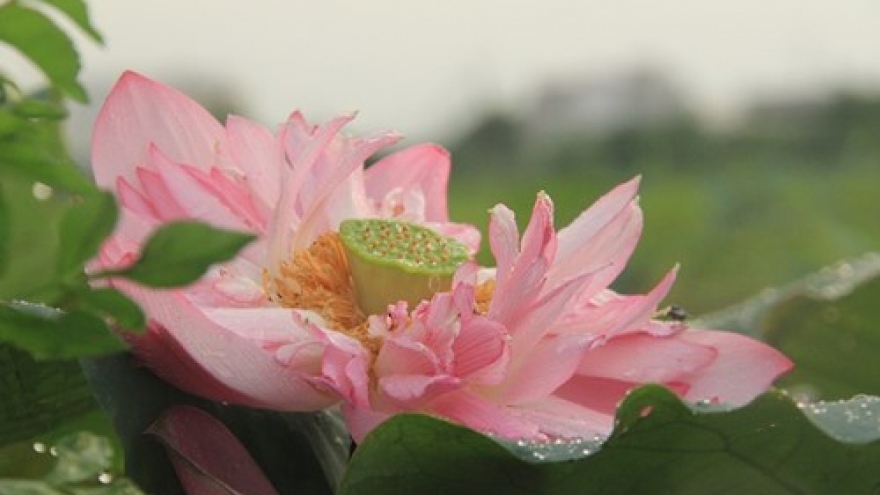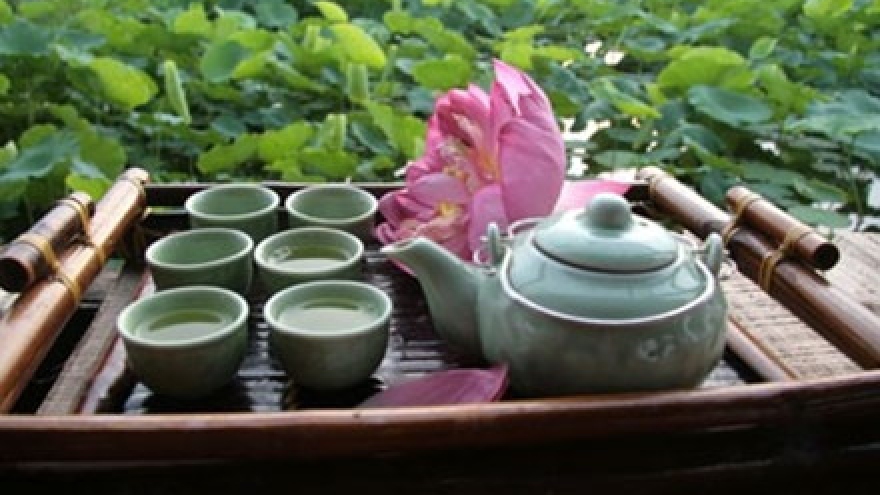Lotus takes pride of place in Hue's royal gastronomy
The lotus holds a special place in Vietnamese hearts, culture and history. The lotus flower is Vietnam’s national flower.
 |
Traditional Vietnamese literature also honours the lotus: “In the pond, nothing’s more beautiful than lotus."
So it’s no surprise that dishes showcasing the lotus are beloved throughout Vietnam.
Among the Royal City of Hue’s many lotus dishes are its specialities: Conm hap la sen (Steamed rice with lotus seeds, wrapped in a lotus leaf) and Che sen nhan long (Lotus seed pudding with longan).
These noble dishes were the food of kings in the 18th century during the Nguyen Dynasty. They are considered the pinnacle of Hue’s cuisine.
These two dishes are very satisfying. They are also medicinal, harmonising vitality, tranquilising emotions and cooling the body, says Nguyen Dac Xuan, 90, a historian specialising in the history and culture of the Nguyen Dynasty.
Xuan knows these dishes well. His grandfather was a musician at the Hue Imperial Palace.
Unlike Chinese imperial palace foods, known for their luxuriousness and authentic recipes, Hue’s royal foods emphasised culinary artistry and expertise in combining foods and arranging flavourful, aromatic creations artistically, says Xuan.
Com hap la sen (Steamed rice with lotus seeds, wrapped in a lotus leaf)
Com hap la sen is arranged like a blooming lotus flower wrapped inside a lotus leaf with rice and lotus seeds.
“This creates perfect harmony between cuisine and nature,” Hue culinary expert Hoang Thi Nhu Huy says.
To make com hap la sen with a deep lotus flavour, Huy uses boiled water to cook the rice. The challenge is keeping the rice in a lotus flower shape, while the lotus leaf remains green.
The dish is now so popular that it is served at weddings and birthday parties, unlike in the past when it was only served to the king.
Nguyen Van Hoc, a Hue resident, thinks of the dish as the work of a talented artisan who creates the rice with cool, fragrant and attractive colours. "The lotus seed scent is deeply imbued into each soft rice grain and mixed with the sweet flavour of chicken, shrimp, lotus seeds and other ingredients, all mixed together to create a very unique and aromatic flavour," he says.
Che sen nhan long (Lotus seed pudding)
Lotus seed pudding is the most popular dish in Hue and throughout Vietnam. The ingredients are simple: lotus seeds, longan, and sugar. But “this is still an enjoyable dessert desired by many," says Hue culinary expert Ton Nu Thi Ha.
No one knows exactly when the dish was created. But the elderly in Hue say lotus seed pudding is hundreds of years old. The simple ingredients of the dish have played an important role in defining Hue’s cuisine.
These days, Ha Thanh (the old name for Hanoi) serves lotus seed pudding, too.
But Hue pudding still features unique characteristics because it uses fresh local ingredients.
"Hue lotus has a nutty flavour and Hue’s small longan is crispy and lightly sweet," Ha says.
In the past, royal cooks often ordered longan from Kim Long District, famed for its very sweet, scented fruit.
Making lotus seed pudding is a sophisticated process to ensure that the boiled lotus seed wrapped in longan remains as white as a pearl.
“The pudding is often eaten in summer to cool heat inside the body, to reduce stress, and to improve the health of children and the elderly, especially people lacking sleep,” Ha says.
Tran Van Kieu of Hanoi’s Hai Ba Trung District says the pudding is both luxurious and common and it is enjoyed by everyone from high-ranking officials to labourers.




